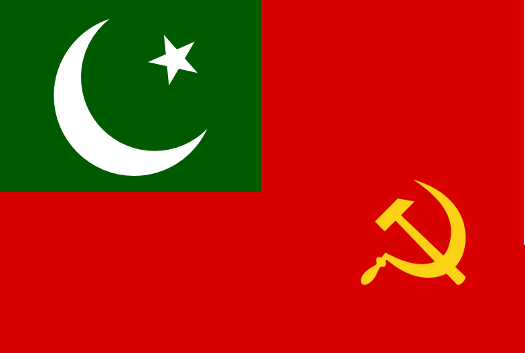 One of the BBC’s undoubted successes is BBC 1’s “Antiques Roadshow”. This series about the appraisal of antiques was first broadcast on Sunday 18th February 1979 and the show is, as of 2017, on its 39th series. The show’s success has spawned versions in other countries with the same TV format, including Canada and the United States. The show is currently presented by Mrs Nigel Sharrocks, AKA Ms Fiona Bruce (above).
One of the BBC’s undoubted successes is BBC 1’s “Antiques Roadshow”. This series about the appraisal of antiques was first broadcast on Sunday 18th February 1979 and the show is, as of 2017, on its 39th series. The show’s success has spawned versions in other countries with the same TV format, including Canada and the United States. The show is currently presented by Mrs Nigel Sharrocks, AKA Ms Fiona Bruce (above).
A great and enduring attraction of the show is not only the variety of the objects featured and their values but the circumstances and personalities of their owners. Many objects are of great sentimental and family history value which the owners treasure and would under no circumstances part with. Then there are those objects that were acquired by their owners from such as car boot sales or charity shops often for amounts under £10 which are given a very high auction valuation by the expert – to the great surprise and delight of the owner. Whilst such owners can be described as being “gob-smacked” one can imagine the original owner who was responsible for disposing of it could be described as being “gutted”!
There are however those rare occasions where an owner is placed in an invidious quandary. This is where the owner – a person of very ordinary means – brings an object that is of great sentimental and family history value which the owners treasure and would under normal circumstances not consider parting with, that is subsequently given an enormous valuation by the expert.
In such cases the object often ends up in the auction sale room because of “common sense” and financial and tax concerns. For an ordinary family living in a modest residence and on average earnings to have in their possession an object d’art that is worth three times their residence is to present an unacceptable risk to their overall wealth as well as a huge insurance premium to pay.
Then of course there is the evil of tax. Selling an object of great value would attract Capital Gains Tax which for an ordinary person is set at a lower level than Inheritance Tax. It may make financial sense to sell the said item.
However selling the item causes sadness for such ordinary folk have parted with something they can never replace, which in most cases can be described as coming into their possession through “an accident of history”.
Yesterday, Her Majesty the Queen with the Prince of Wales in attendance opened Parliament. It was one of those occasions that was noticeable by what was missing and not by what there was. The manifesto that was the body of the government’s programme was not so much reduced as exsanguinated and then eviscerated to boot!
The most elegant and articulate comment about the whole palaver however was made by HM herself: by doing away with the gown and crown! The second most eloquent comment was made by Mr Dennis Skinner the Member for Bolsover:Today’s article will not be focusing any further on the core substance – Brexit – that was left in the speech. For informed comment on this we would recommend that readers GOTO: http://eureferendum.com/blogview.aspx?blogno=86516
As she read the words – handwritten in ink on vellum – before her we can imagine that HM’s mind was on her husband being cared for in hospital. This of course brings to all our minds the question of the succession.
At this point, many British Gazette readers will immediately seek to warn the Editor about committing the felony crime of “imagining the death of the Sovereign” by proceeding to speculate in this area. Your Editor points out that for the authorities to take action against this organ would truly be a case of “pot meet kettle” as most of those assembled before HM yesterday were/are in breach of their Privy Council oaths to ensure that “no foreign prince potentate or power shall have precedence in this land” and their Parliamentary oaths to “bear true allegiance to HM and her successors according to law”!
On Sunday 6th February 2022, HM will celebrate her Platinum Jubilee. She will not however be the first monarch to celebrate such. The first was King Louis XIV of France.
King Louis XIV (5th September 1638 – 1st September 1715), known as Louis the Great (Louis le Grand) or the Sun King (le Roi Soleil), was a monarch of the House of Bourbon who reigned as King of France from 14th May 1643 (aged 4 years, 8 months and 10 days) until his death. His reign of 72 years and 110 days is the longest recorded of any monarch in European history.
Then there was: Prince Johann II of Liechtenstein (5th October 1840 – 11th February 1929), a.k.a. Johann II der Gute or Johann II the Good, ruled from 1858 to 1929. His reign of 70 years and 90 days is the second-longest in European royal history after that of Louis XIV of France who, however, was crowned at age 5.
Then there was: King Sobhuza II, KBE (22nd July 1899 – 21st August 1982) was the Paramount Chief and later King of Swaziland for 82 years, the longest verifiable reign of any monarch in recorded history. The King was born at the Zombodze Royal Residence, the son of Inkhosikati Lomawa Ndwandwe and King Ngwane V. When he was only four months old, his father died suddenly while dancing incwala. Sobhuza was chosen King soon after that and his grandmother Labotsibeni and his uncle Prince Malunge led the Swazi nation until his maturity in 1921. King Sobhuza led Swaziland through independence until his death in 1982.
Then there was: King Bhumibol the Great of Thailand who had reigned since 9th June 1946, he was, at the time of his death on 13th October 2016, the world’s longest-serving head of state and the longest-reigning monarch in Thai history, serving for 70 years and 126 days.
One thing these five monarchs have in common is that all, have in HM’s case, had in the other four, saw huge changes in their countries during their reigns.
Insofar as the British monarchy is concerned there is some speculation as to who – or what – will succeed HM.
Since HRH The Duke of Edinburgh is 4 years, 10 months and 12 days older than HM, it will not be a surprise if HM becomes a widow at some point during her reign. On her Platinum Jubilee, HM will have reached the age of 95 years, 9 months and 17 days. Her son, the Prince of Wales will have reached the age of 73 years, 2 months and 24 days. Her grandson, Prince William, Duke of Cambridge, KG, KT, PC, ADC(P) will have reached the age of 39 years, 7 months and 17 days.
On Sunday, 26th May 2024 which is 6 years, 11 months and 3 days off, HM will have equalled King Louis XIV’s time on the throne.
Everybody will of course be looking forward to Tuesday 26th April 2026 when HM will be able to experience the unique pleasure in sending herself a telegram congratulating her on reaching her centenary!
Thus it is, we can suggest, that the nation’s monarchy which has been acquired through “an accident of history” is held by many to be of very great value and if dispensed with, is something which cannot be replaced.
Of course, there will be many who voted recently for the candidates standing for the party led by Comrade Corbyn who would avowedly state that an elected President should replace HM.
Of course, what we have here is a comparison between ironies. On the one hand we have a system that is seemingly indefensible – an unelected head of state determined by accident of birth from one particular family and another system that is democratically beyond reproach but fails miserably in practice.
Here is a FACT: the choice between a republic and a constitutional or “limited” monarchy ends up being a choice between good theory OR good practice!
Since we KNOW that HM’s successor will either be the Prince of Wales or Duke of Cambridge the speculative analysis should and will focus on two things:
1. What type of President?
2. Who or what type of individual would occupy the post of President?
Insofar as 1. is concerned: Do we have an Executive President such as President Donald Trump? Or should we have a ceremonial non executive President elected by the Parliamentarians as in Germany or a ceremonial non executive President directly elected by the people as in Austria?
Insofar as 2. is concerned the answer is obvious whatever type of president is chosen: a politician.
You will note Dear Reader we have not named the Presidents or Germany and Austria.
Ask yourself these questions: Do you know the identity of these two persons? How many Britons would know the identity of these two persons? How many Germans would be able to name the head of state of Great Britain? How many Austrians would be able to name the head of state of Great Britain?
So there you have it Dear Reader! Do you want President Bercow and First Lady Sally or King Charles III and Queen Camilla?
The choice as they say is yours!
Oh, by the way! One more thing! What is the name of the state you want to replace the United Kingdom of Great Britain and Northern Ireland?
Here are ten choices:
1. The Democratic People’s Republic of Great Britain.
2. The Democratic Republic of Great Britain.
3. The People’s Republic of Great Britain.
4. The Federal Republic of Great Britain.
5. The United People’s Republic of Great Britain.
6. The United Democratic Republic of Great Britain.
7. The United Democratic People’s Republic of Great Britain.
8. The Republic of Great Britain.
9. The Socialist People’s Republic of Great Britain.
10. The Union of Soviet Socialist Republics (Capital Bolsover, Derbyshire)
And how about this for the republic’s flag?

Speaking the Truth unto the Nation
